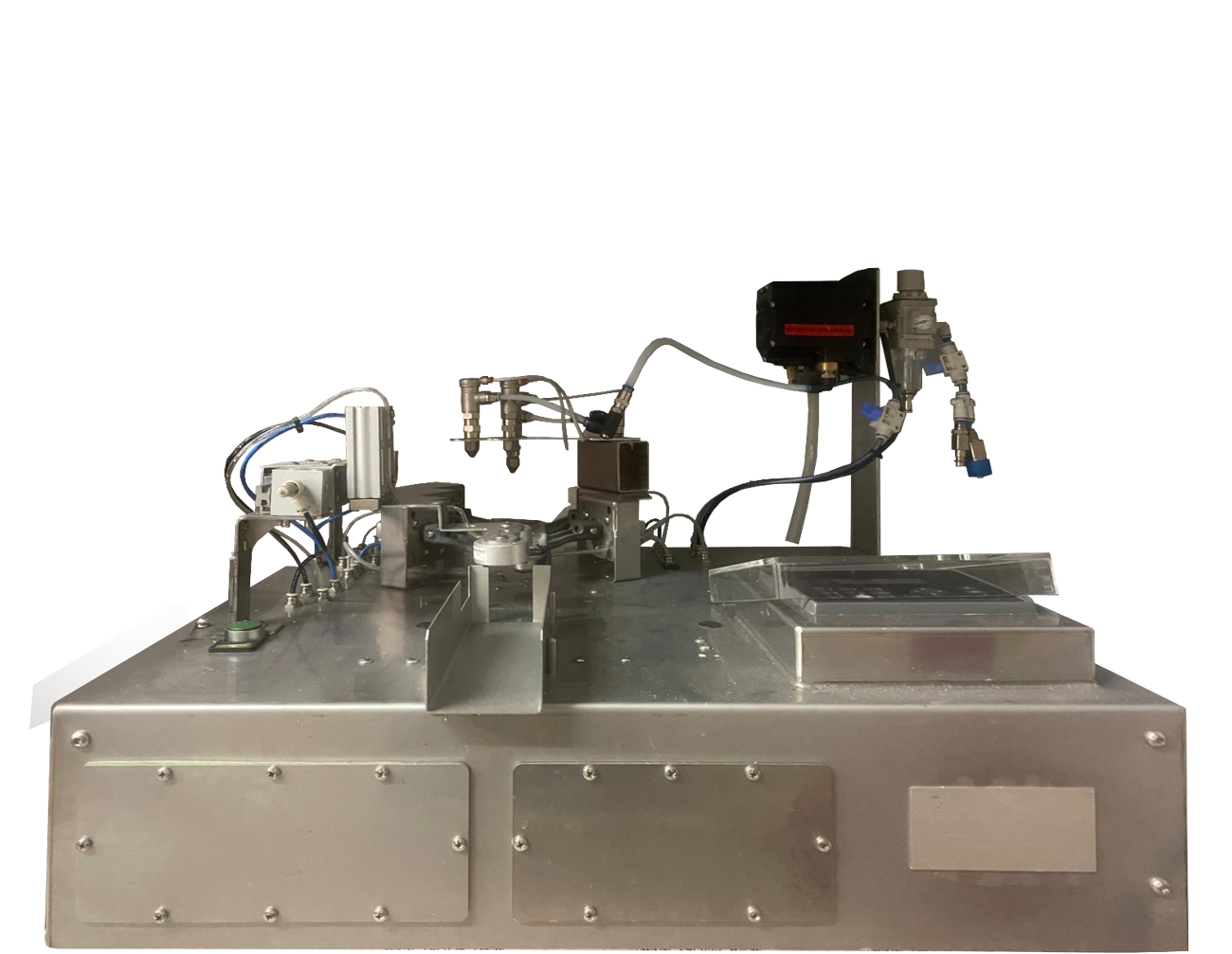
Robot E6B
This samosa folding robot automatically transfers the strip of dough placed on the unloading location, applies glue dots and folds into 3 successive folds with ejection of the finished product.
- Production rate: 600 units/hour, largely depends on the dexterity of the operator, who is responsible for triggering the bending process.
- Operation: electro-pneumatic, cycle by cycle, automatic, with emergency start/stop button
- Dimensions: 75 cm x 75 cm x Height 50 cm with a weight of approx. 35 kg.
- Warranty: 2 years
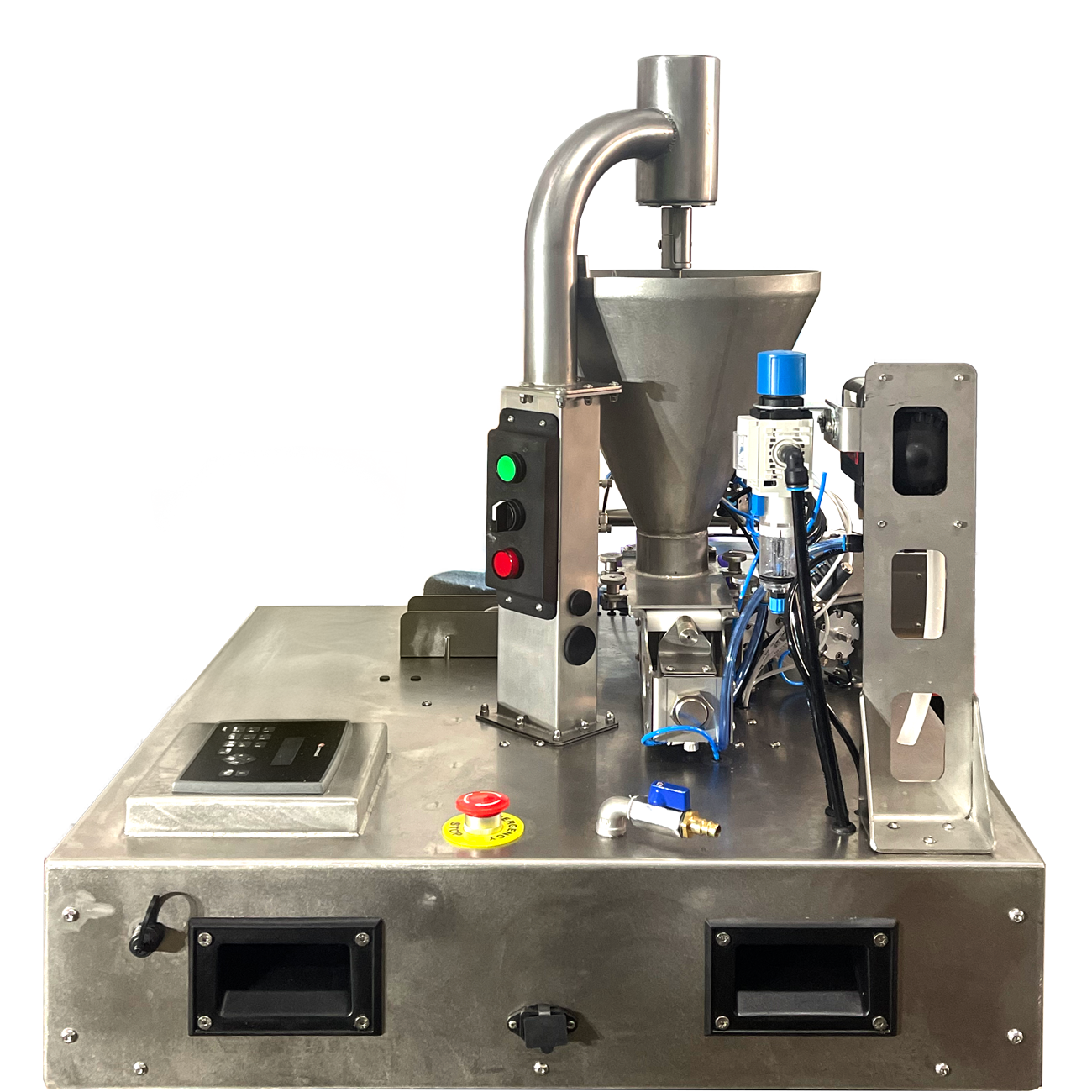
Robot E6C
This samosa folding robot automatically transfers the strip of dough placed on the unloading location, deposits the stuffing, places the glue dots and folds it into 3 or 4 successive folds, with ejection of the finished product.
- Production rate: 600 units/hour
- Operation: electro-pneumatic, cycle by cycle, automatic, with emergency start/stop button
- Dimensions: 75 cm x 75 cm x Height 80 cm Weight approximately 55 kg
- Warranty: 2 years
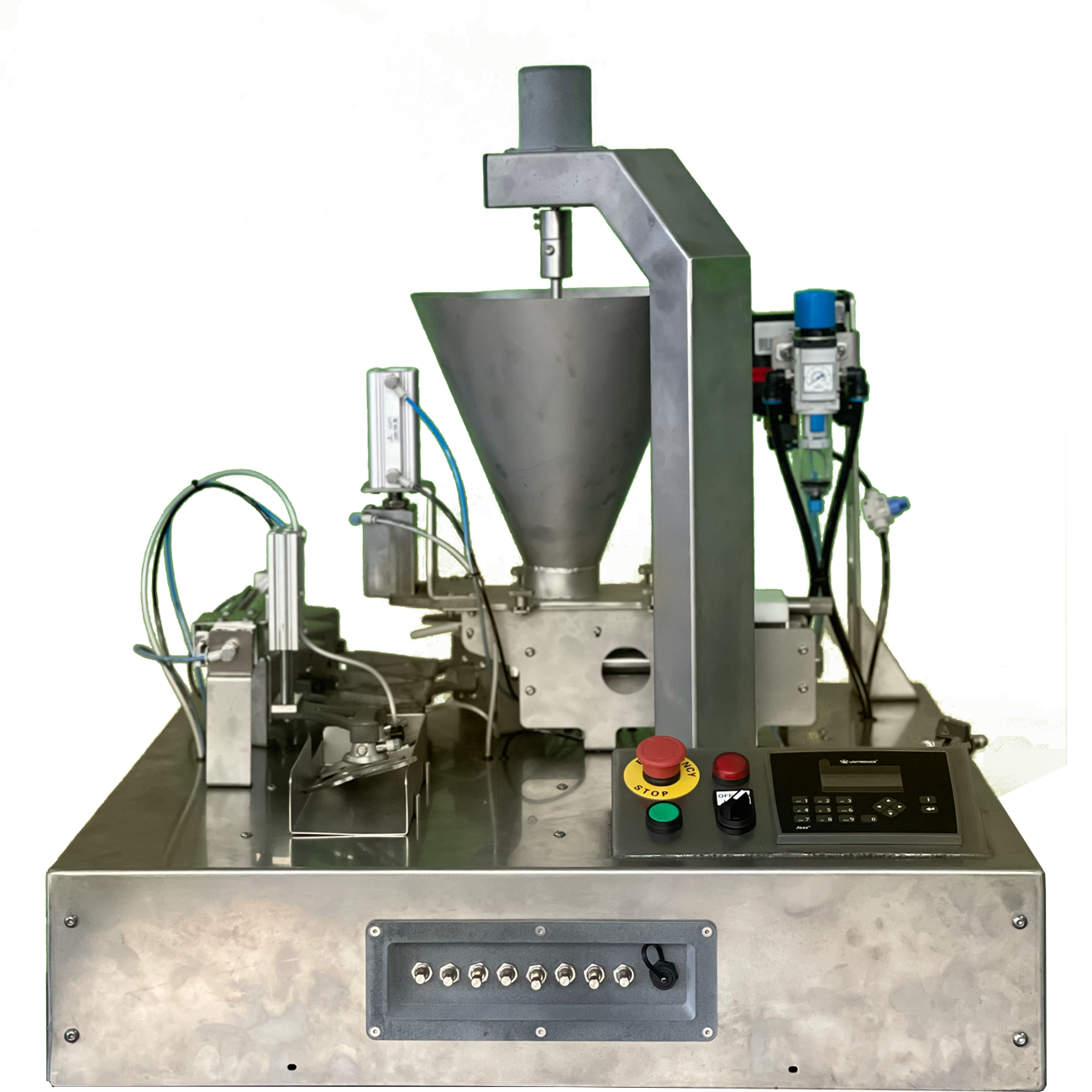
Robot E7
This samosa folding robot automatically transfers the strip of dough placed on the unloading location, deposits the stuffing, removes the glue dots and folds into 4 successive folds, with ejection of the finished product.
- Production rate: 450 units/hour
- Operation: electro-pneumatic, cycle by cycle, automatic, with emergency start/stop button
- Dimensions: 75 cm x 75 cm x Height 80 cm Weight approximately 57 kg
- Warranty: 2 years
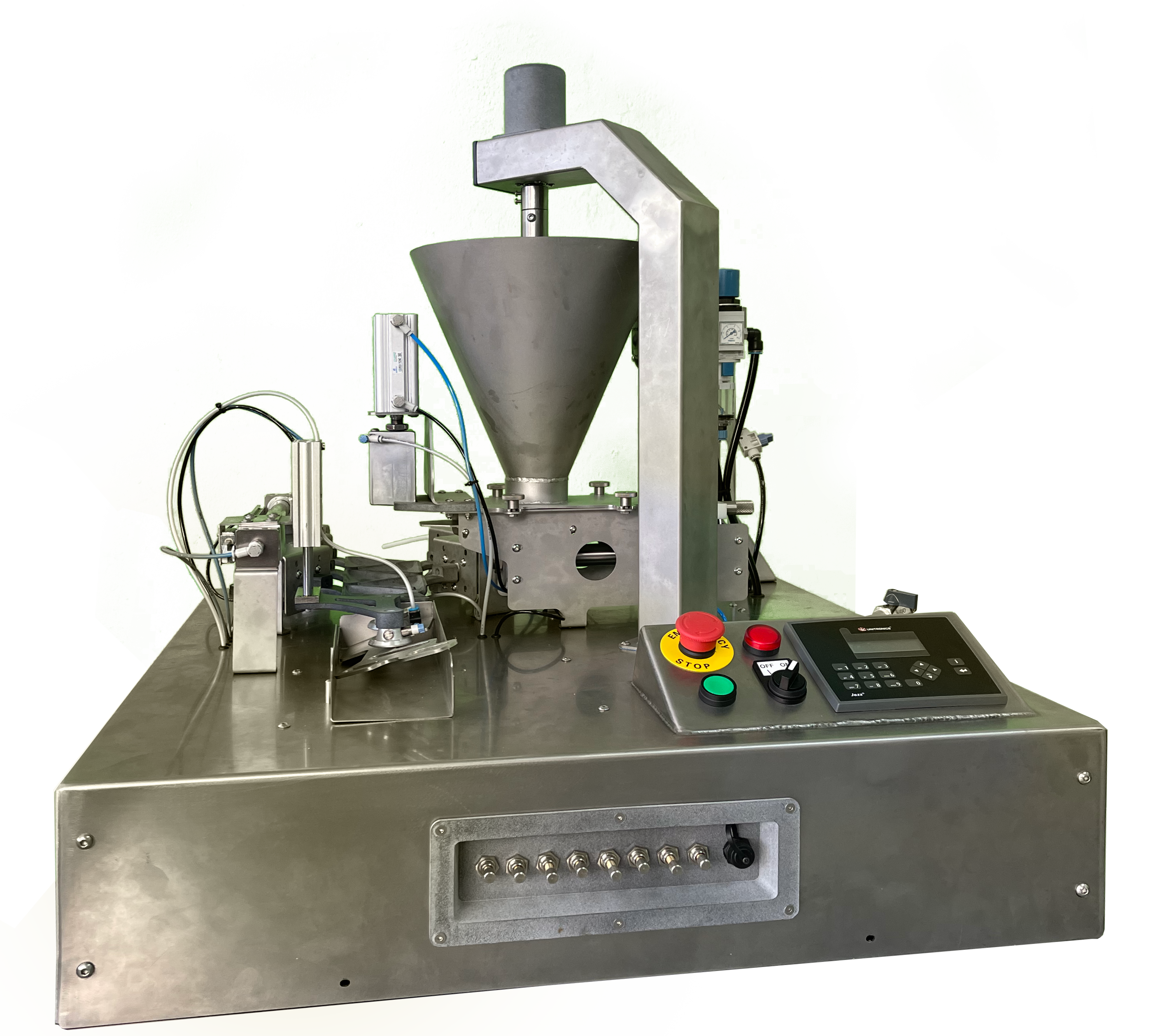
Robot E8
This samosa folding robot automatically transfers the strip of dough placed on the unloading location, deposits the stuffing, removes the glue dots and folds into 4 successive folds, with ejection of the finished product.
- Production rate: 450 units/hour
- Operation: electro-pneumatic, cycle by cycle, automatic, with emergency start/stop button
- Dimensions: 75 cm x 75 cm x Height 80 cm Weight approximately 57 kg
- Warranty: 2 years
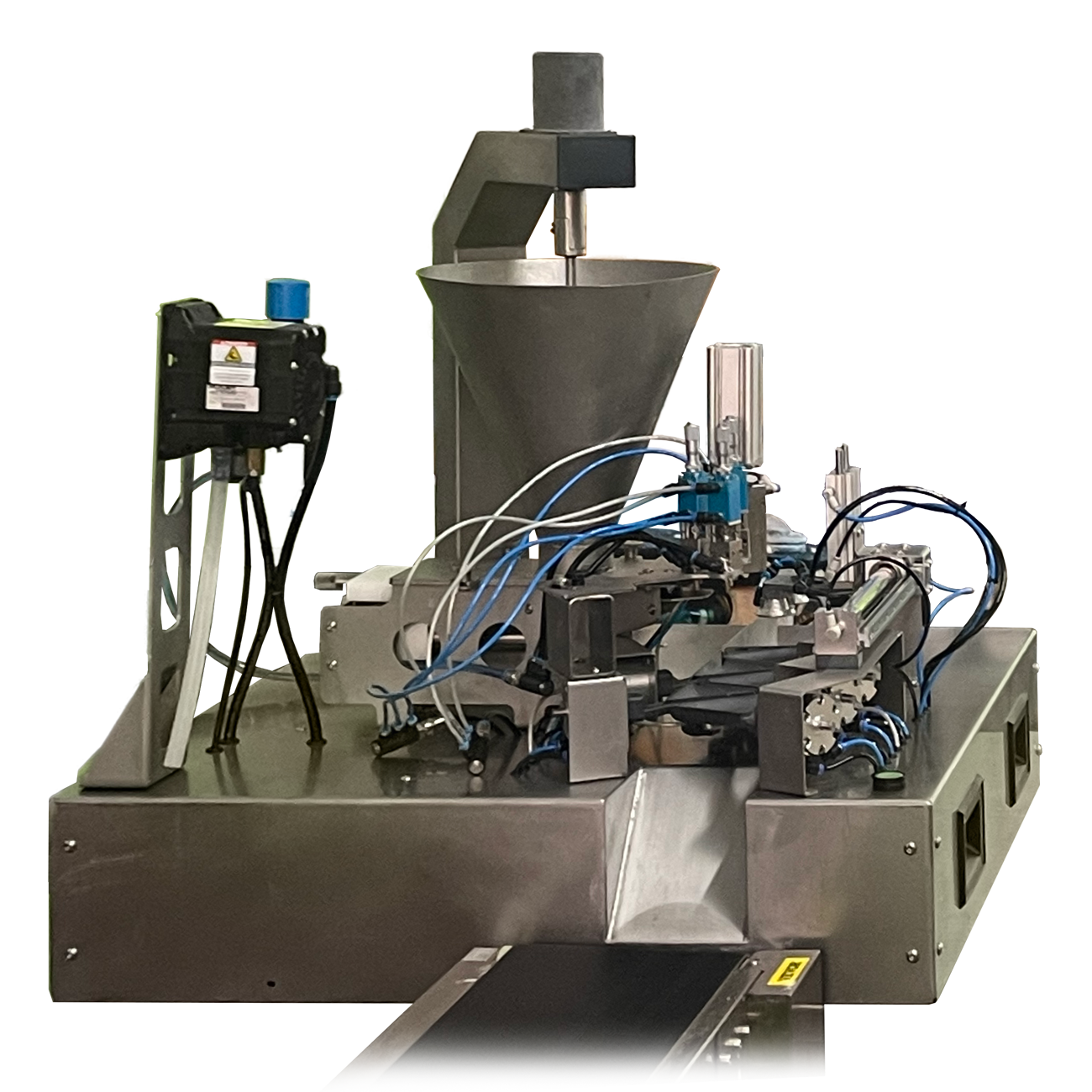
Robot E9
This samosa folding robot automatically transfers the strip of dough placed on the unloading location, deposits the stuffing, removes the glue dots and folds into 3 successive folds, with ejection of the finished product.
- Production rate: 450 units/hour
- Operation: electro-pneumatic, cycle by cycle, automatic, with emergency start/stop button
- Dimensions: 75 cm x 75 cm x Height 80 cm Weight approximately 57 kg
- Warranty: 2 years
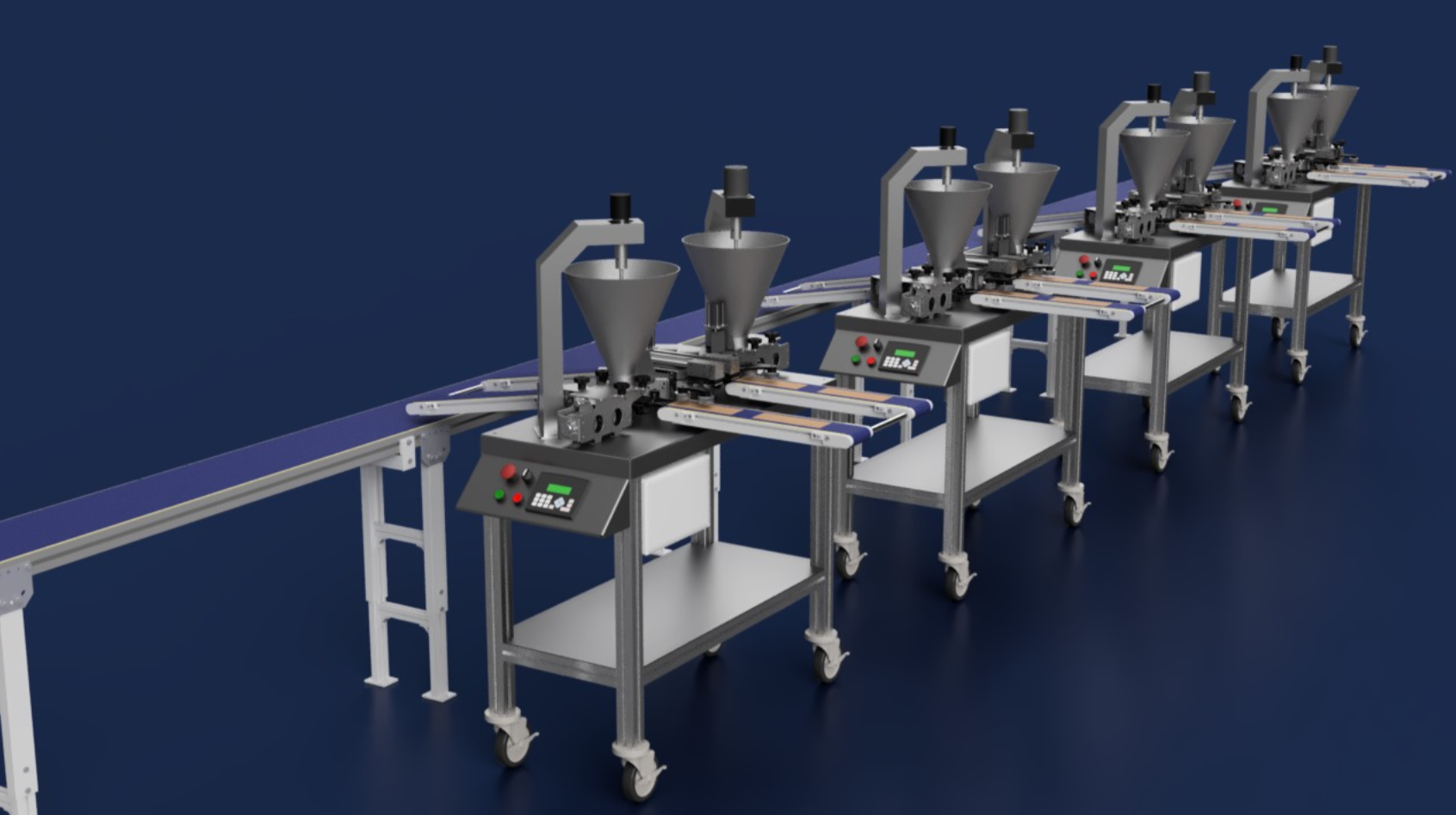
Custom Automated Line
For producers requiring higher capacity, we offer the possibility to develop a custom automated line. This solution is ideal for large-scale productions starting from 10,000 samosas per day, specifically tailored to the customer's needs.
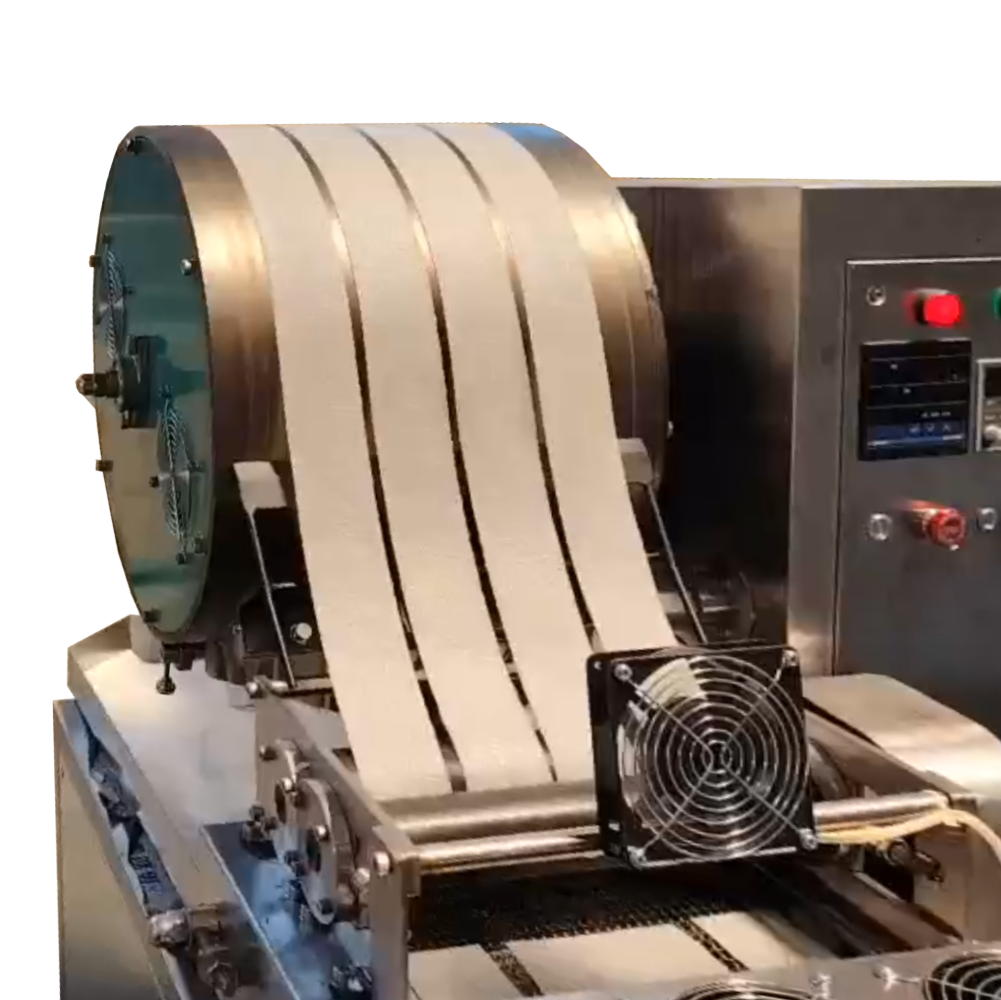
Samosa Dough Machine with Drum Cooking
Samosa Dough Machine with Drum Cooking
This machine is specially designed to automate the preparation of thin and uniform dough sheets, essential for the manufacture of samosas. With its integrated drum cooking system, it allows for rapid and uniform cooking of the dough, suitable for industrial production.
OUR SAMOSA FOLDING PROCESS
Our bending robots, from the basic model with automated system to the complete production line, meet all your needs.
With a single operator per robot for the robotic model (and the possibility of controlling 2 to 3 robots simultaneously), these compact and high-performance machines guarantee high efficiency. Operating thanks to an electro-pneumatic system, they are easy to use, require little maintenance and are quick to clean.
Key features of Eddiol folding robots:
• Various weights: suitable for producing samosas from 20 to 95 g, depending on the model chosen.
• Folding: 3 to 6 folds.
• Custom dough dimensions: width ranging from 6 cm to 9 cm, for great flexibility.
• Optimal speed: up to 600 samosas per hour for the fastest models
Eddiol advantages:
• Exceptional precision, guaranteeing consistent, quality results.
• Flexibility of use, capable of adapting to artisanal and industrial production needs.
• Compact, reliable and easy-to-use machines, ideal for optimizing your manufacturing processes.
With Eddiol, give your samosas the precision of technology while preserving the authenticity of traditional methods.
The steps:
1
Place the strips of dough
Automatic Mode
2
Deposit fixed quantities of filling
Automatic Mode
3
Apply glue dots
Automatic Mode
4
The Folding
Automatic Mode
Eddiol Robots around the world
